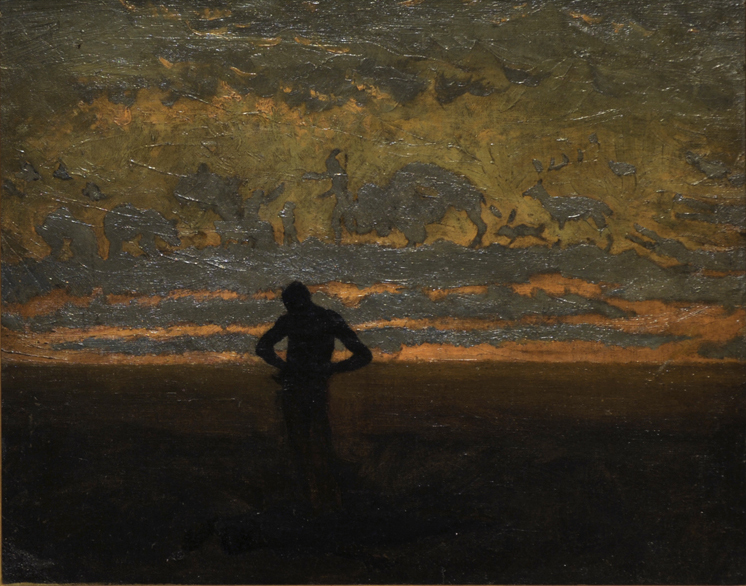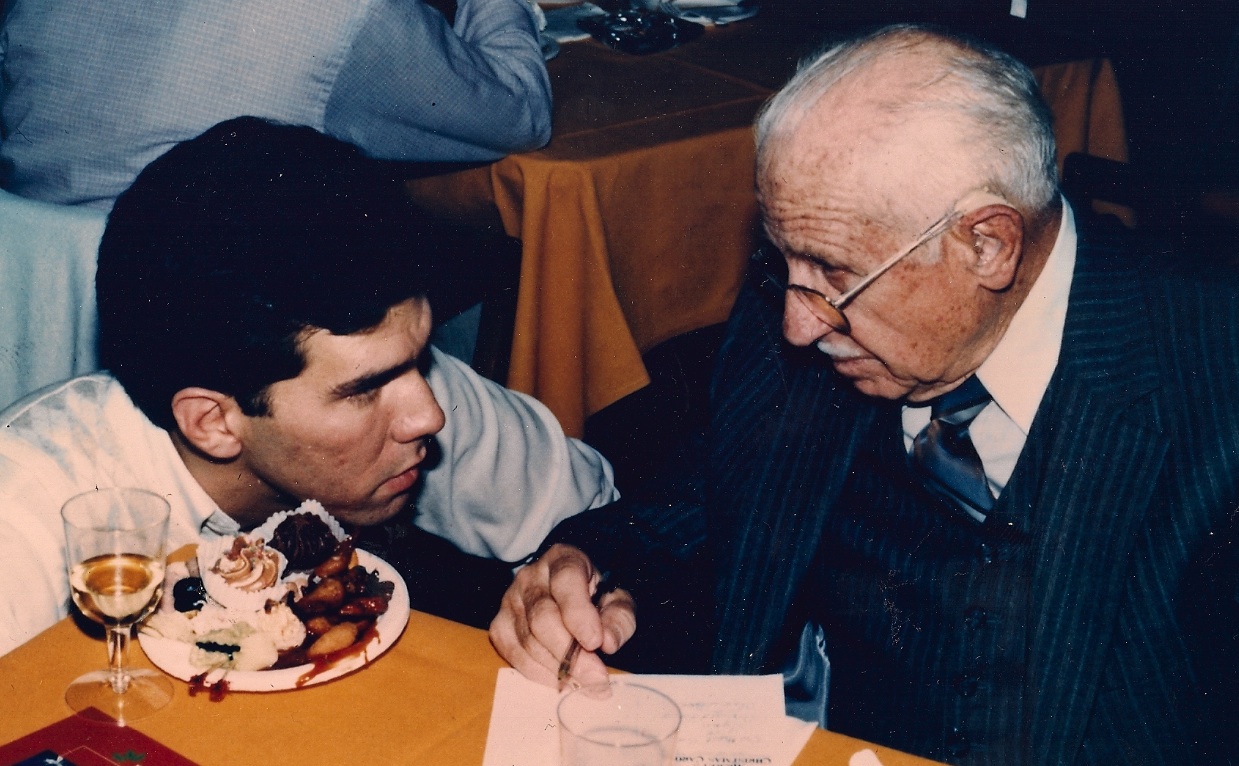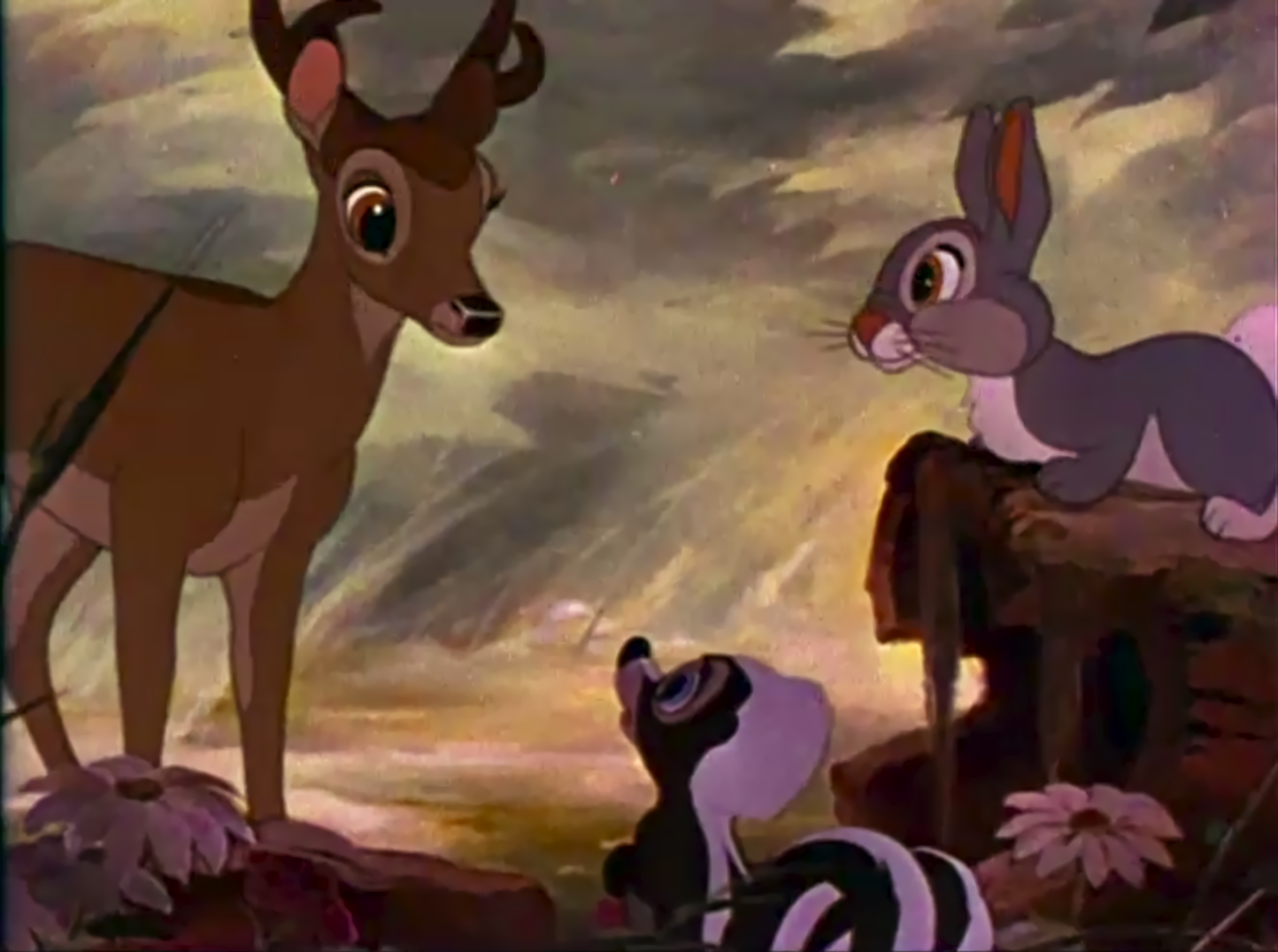|
Little Hiawatha
''Little Hiawatha'' (also called ''Hiawatha'') is a 1937 animated cartoon produced by Walt Disney Productions, inspired by the poem ''The Song of Hiawatha'' by Henry Wadsworth Longfellow. It does not appear to have historical correlation to legendary Mohawk leader and peacemaker Hiawatha. It is the last ''Silly Symphonies'' short to be released by United Artists. Plot Over opening narration, a Native American boy named Little Hiawatha is seen paddling his canoe down a river – at one point backwards – on his way to hunt game. Upon reaching land, he steps out and immediately falls down a hidden hole in the water, bringing about the laughter of the animals in the forest. Hiawatha gives chase to them – with his pants often falling down as the cartoon's running gag. Hiawatha pursues a grasshopper, but is foiled when it spits in his face, much to the amusement of the other animals. He chases them again and manages to corner a baby rabbit on a tree stump; he finds, however, th ... [...More Info...] [...Related Items...] OR: [Wikipedia] [Google] [Baidu] |
David Hand (animator)
David Dodd Hand (January 23, 1900 – October 11, 1986) was an American animator and animation filmmaker known for his work at Walt Disney Productions. He worked on numerous Disney shorts during the 1930s and eventually became supervising director on the animated features ''Snow White and the Seven Dwarfs'' and ''Bambi''. Biography Born in Plainfield, New Jersey, Hand began his animation career working on Max Fleischer's ''Out of the Inkwell'' cartoons throughout the 1920s. He joined the Disney studio in 1930 during a major drive by Disney to recruit from the best of animating talent. Hand immediately made his mark as an animator. By 1932 he was regarded as one of the studio's top animators (despite some complaints that his work was "too mechanical") and had become a close friend of Disney himself. Hand's organizational skills made Disney select him to be the studio's third director after Burt Gillett and Wilfred Jackson. He made his directorial debut for the company with the ... [...More Info...] [...Related Items...] OR: [Wikipedia] [Google] [Baidu] |
Hiawatha
Hiawatha ( , also : ), also known as Ayenwathaaa or Aiionwatha, was a precolonial Native American leader and co-founder of the Iroquois Confederacy. He was a leader of the Onondaga people, the Mohawk people, or both. According to some accounts, he was born an Onondaga but adopted into the Mohawks. Legend Although Hiawatha was actually a real person, he was mostly known through his legend. The events in the legend have been dated to the middle 1100s through the occurrence of an eclipse coincident with the founding of the Iroquois Confederacy.Dates of 1390–1630 have also been proposed. This material and quotations are taken from the Mohawk version of the legend, as related by the prominent chief Seth Newhouse (Dayodekane). For an Onondaga version of the legend, see Parker: "The Hiawatha Tradition". When the founder of the Confederacy, Dekanawidah, known as ''The Great Peacemaker'', first came to Iroquoia, one of the first people he met was Hiawatha, not yet called by that na ... [...More Info...] [...Related Items...] OR: [Wikipedia] [Google] [Baidu] |
Donald Duck
Donald Fauntleroy Duck is a cartoon character created by The Walt Disney Company. Donald is an anthropomorphic white duck with a yellow-orange bill, legs, and feet. He typically wears a sailor shirt and cap with a bow tie. Donald is known for his semi-intelligible speech and his mischievous, temperamental, and pompous personality. Along with his friend Mickey Mouse, Donald was included in ''TV Guide''s list of the 50 greatest cartoon characters of all time in 2002, and has earned a star on the Hollywood Walk of Fame. He has appeared in more films than any other Disney character, and is the most published comic book character in the world outside of the superhero genre. Donald Duck appeared in comedic roles in animated cartoons. Donald's first theatrical appearance was in ''The Wise Little Hen'' (1934), but it was his second appearance in ''Orphan's Benefit'' that same year that introduced him as a temperamental comic foil to Mickey Mouse. Throughout the next two decades, Don ... [...More Info...] [...Related Items...] OR: [Wikipedia] [Google] [Baidu] |
Disney Comics
Disney comics are comic books and comic strips featuring characters created by the Walt Disney Company, including Mickey Mouse, Donald Duck and Uncle Scrooge. The first Disney comics were newspaper strips appearing from 1930 on, starting with the ''Mickey Mouse'' comic strip. ''Mickey Mouse Magazine'', the first American newsstand publication with Disney comics, launched in 1935. In 1940, Western Publishing launched the long-running flagship comic book, ''Walt Disney's Comics and Stories'', which reached 750 issues in September 2019. ''Uncle Scrooge'', launched in 1952, reached issue #450 in June 2019. In recent decades, Disney comics have seen a decline of popularity in the US. In the rest of the world Disney comics have remained very successful, especially in Europe, where weekly Disney comics magazines and monthly paperback digests are national best sellers. United States: Comic strips The first Disney comics appeared in daily newspapers, syndicated by King Features with ... [...More Info...] [...Related Items...] OR: [Wikipedia] [Google] [Baidu] |
Walt Disney's Comics And Stories
''Walt Disney's Comics and Stories'', sometimes abbreviated ''WDC&S'', is an American Comics anthology, anthology comic book series featuring characters from The Walt Disney Company's films and shorts, including Donald Duck, Scrooge McDuck, Mickey Mouse, Chip 'n Dale, Li'l Bad Wolf, Scamp (comics), Scamp, Bucky Bug, Grandma Duck, Brer Rabbit, Winnie the Pooh, and others. With more than 700 issues, ''Walt Disney's Comics & Stories'' is the longest-running Disney comics, Disney comic book in the United States, making it the flagship title, and is one of the best-selling comic books of all time. The book was originally published by Dell Comics (1940–1962), and there have been many revivals over the years, continuing the same legacy numbering. The revivals have been published by Gold Key Comics (1962–1984), Gladstone Publishing (1986–1990), Disney Comics (publishing), Disney Comics (1990–1993), back to Gladstone Publishing (1993–1999), Gemstone Publishing (2003–2008), Bo ... [...More Info...] [...Related Items...] OR: [Wikipedia] [Google] [Baidu] |
Inducks
The International Network of Disney Universe Comic Knowers and SourcesFrom Inducks lecture held at the 200 DDF(R) in Aalborg, Denmark, July 2008. [...More Info...] [...Related Items...] OR: [Wikipedia] [Google] [Baidu] |
Bambi
''Bambi'' is a 1942 American animated drama film directed by David Hand (supervising a team of sequence directors), produced by Walt Disney and based on the 1923 book ''Bambi, a Life in the Woods'' by Austrian author and hunter Felix Salten. The film was released by RKO Radio Pictures on August 13, 1942, and is the fifth Disney animated feature film. The main characters are Bambi, a white-tailed deer; his parents (the Great Prince of the forest and his unnamed mother); his friends Thumper (a pink-nosed rabbit); and Flower (a skunk); and his childhood friend and future mate, Faline. In the original book, Bambi was a roe deer, a species native to Europe; but Disney decided to base the character on a mule deer from Arrowhead, California. Illustrator Maurice "Jake" Day convinced Disney that the mule deer had large "mule-like" ears and were more common to western North America; but that the white-tail deer was more recognized throughout America. The film received three Acad ... [...More Info...] [...Related Items...] OR: [Wikipedia] [Google] [Baidu] |
Charlie Thorson
Charles "Charlie" Gustav Thorson (29 August 1890 – 7 August 1966) was a Canadian political cartoonist, character designer, children's book author and illustrator. Thorson is best known as the man who designed an early version of the then yet unnamed Bugs Bunny. Leonard Maltin, ''Of Mice and Magic: A History of American Animated Cartoons'' (NAL and McGraw Hill, 1980; revised edition, November 1987), p. 242 Early life and family Thorson was born in Winnipeg, Manitoba, Canada and given the name Karl Gústaf Stefánsson. He was of Icelandic descent, as his parents were part of the Icelandic immigration to Canada in the 19th century. His parents were part of the 1,700 Icelanders who registered with the Winnipeg Immigration Office in 1887. Politician Joseph Thorson was his older brother. Career Thorson's self-portrait drawing in 1931 portrayed him as a Viking based on his Icelandic descent. From 1935 to 1945, Thorson worked in American animation studios, including The Walt Disne ... [...More Info...] [...Related Items...] OR: [Wikipedia] [Google] [Baidu] |
Silly Symphony (comic Strip)
''Silly Symphony'', initially titled ''Silly Symphonies'', is a weekly Disney comic strip that debuted on January 10, 1932 as a topper for the ''Mickey Mouse'' strip's Sunday page. The strip featured adaptations of Walt Disney's popular short film series, ''Silly Symphony'', which released 75 cartoons from 1929 to 1939, as well as other cartoons and animated films. The comic strip outlived its parent series by six years, ending on October 7, 1945. ''Silly Symphony'' initially related the adventures of Bucky Bug, the first Disney character to originate in the comics. It went on to print loose adaptations of ''Silly Symphony'' shorts, often using the characters and setting of the original shorts, but adding new plotlines and incidents. Later, it went on to print adaptations of some of Disney's feature films, as well as periods of gag strips featuring Donald Duck and Pluto. By late 1935, the strip had become a standalone half-page, and was no longer strictly a topper for the ''Mick ... [...More Info...] [...Related Items...] OR: [Wikipedia] [Google] [Baidu] |
Beaver
Beavers are large, semiaquatic rodents in the genus ''Castor'' native to the temperate Northern Hemisphere. There are two extant species: the North American beaver (''Castor canadensis'') and the Eurasian beaver (''C. fiber''). Beavers are the second-largest living rodents after the capybaras. They have stout bodies with large heads, long chisel-like incisors, brown or gray fur, hand-like front feet, webbed back feet and flat, scaly tails. The two species differ in the shape of the skull and tail and fur color. Beavers can be found in a number of freshwater habitats, such as rivers, streams, lakes and ponds. They are herbivorous, consuming tree bark, aquatic plants, grasses and sedges. Beavers build dams and lodges using tree branches, vegetation, rocks and mud; they chew down trees for building material. Dams impound water and lodges serve as shelters. Their infrastructure creates wetlands used by many other species, and because of their effect on other organisms in the ... [...More Info...] [...Related Items...] OR: [Wikipedia] [Google] [Baidu] |
Opossum
Opossums () are members of the marsupial order Didelphimorphia () endemic to the Americas. The largest order of marsupials in the Western Hemisphere, it comprises 93 species in 18 genera. Opossums originated in South America and entered North America in the Great American Interchange following the connection of North and South America. The Virginia opossum is the only species found in the United States and Canada. It is often simply referred to as an opossum, and in North America it is commonly referred to as a possum (; sometimes rendered as ''possum'' in written form to indicate the dropped "o"). Possums should not be confused with the Australasian arboreal marsupials of suborder Phalangeriformes that are also called possums because of their resemblance to the Didelphimorphia. The opossum is typically a nonaggressive animal. Etymology The word ''opossum'' is borrowed from the Powhatan language and was first recorded between 1607 and 1611 by John Smith (as ''opassom'') ... [...More Info...] [...Related Items...] OR: [Wikipedia] [Google] [Baidu] |
Raccoon
The raccoon ( or , ''Procyon lotor''), sometimes called the common raccoon to distinguish it from other species, is a mammal native to North America. It is the largest of the procyonid family, having a body length of , and a body weight of . Its grayish coat mostly consists of dense underfur, which insulates it against cold weather. Three of the raccoon's most distinctive features are its extremely dexterous front paws, its facial mask, and its ringed tail, which are themes in the mythologies of the indigenous peoples of the Americas relating to the animal. The raccoon is noted for its intelligence, as studies show that it is able to remember the solution to tasks for at least three years. It is usually nocturnal and omnivorous, eating about 40% invertebrates, 33% plants, and 27% vertebrates. The original habitats of the raccoon are deciduous and mixed forests, but due to their adaptability, they have extended their range to mountainous areas, coastal marshes, and urban ... [...More Info...] [...Related Items...] OR: [Wikipedia] [Google] [Baidu] |



_b_068_white_background.jpg)

_2.jpg)